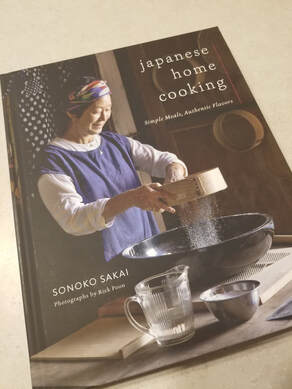 So begins a journey that I started with an impulse Amazon purchase after listening to a Bon Appetit Foodcast interview with cookbook author Sonoko Sakai. Rappaport waxed poetic about Japanese Home Cooking, and the author herself sounded like a knowledgeable and thoughtful author. I remembered the struggle to work out of the Momofuku cookbook more than a year ago, and I wanted to give Japanese food another try through another vehicle. I am hoping this will be the one that makes it easier for the average home cook. Bon Appetit has yet to lead me down the wrong path when a cookbook recommendation has come up in their podcast, so I am trying to keep the faith while looking down the barrel of a cuisine that I am personally intimidated by. Dining In by Alison Roman, Indian-ish from Priya Krishna, and Where Cooking Begins from Carla Lalli Music have all been favorites of mine, and every single one of them came down from the internet’s premiere food media source. So I pulled the trigger on Japanese Home Cooking, and I swallowed down the fear. Just holding the book in my hands made me think back to the same feeling I had when I first cracked the spine of Momofuku. It’s gorgeous. The artwork and photographs are all super powerful in invoking the central idea of the book- japanese home cooking. Gorgeous scenery any western person associates with the island nation is peppered in among the introductory chapters of the book, and I love them. Still, the fear remained.
Given the nature of the material, the biggest hurdle that was present with Momofuku still exists today. The ingredients are not widely available at the average supermarket, so if you decide to go down this path with me, you will need to use Amazon to fill in the gaps (or better yet, find a local Asian grocer and see if they lean Japanese or not). I live in a much larger city with a large immigrant population, though most of the Asian markets my husband has found in my stead lean Thai or Hmong more than Japanese. While writing this article, I put in an order for wakame seaweed, mirin, yuzu juice, dried shiitake mushrooms, and dried sardines. There will probably be more orders to come. As of right now, this is probably the largest amount of money I have spent on base ingredients for a cookbook. We’re at a fifty dollar ingredient barrier, which is not present when considering cookbooks like the others we have looked at so far this year. This is before I have even chosen a recipe to begin. The ingredient barrier leaves me concerned that this may be yet another cookbook that is for the enthusiast only, but we’ll see once we get cooking. Sonoko Sakai front loads the cookbook with a list of many of these ingredients she considers essential in her pantry, so if you do decide to try your hand at this well received book, you won’t have to flip through every recipe to figure out what you need in order to have the basics available. Our initial order will be in before March actually begins, so we’ll be ready to cook on the first weekend and keep you updated about every recipe as they land on the table. I’m excited to share this journey with you as we tackle our first SCARY cookbook of the year.
0 Comments
Leave a Reply. |
The MissionAn idea born in Normal, Illinois, Eating Normal hopes to chronicle the eating Experiences of a Red bird. Pledge monthly to our patreon!
Or, you know, support the mission with caffeine! Buy me a coffee through Ko-Fi. Archives
May 2020
Categories
All
|
 RSS Feed
RSS Feed